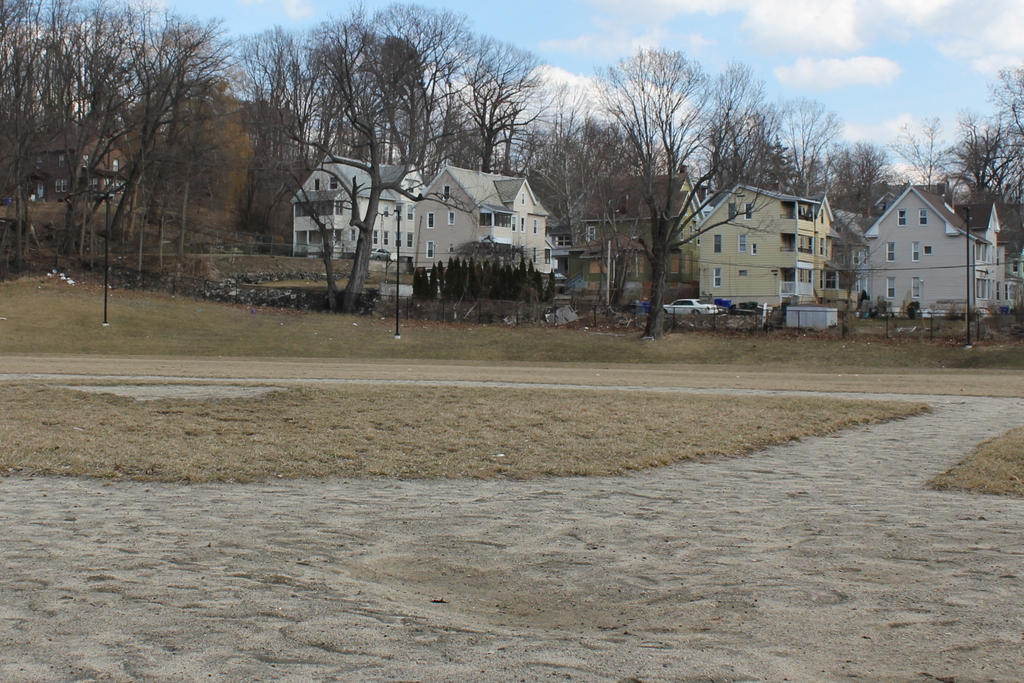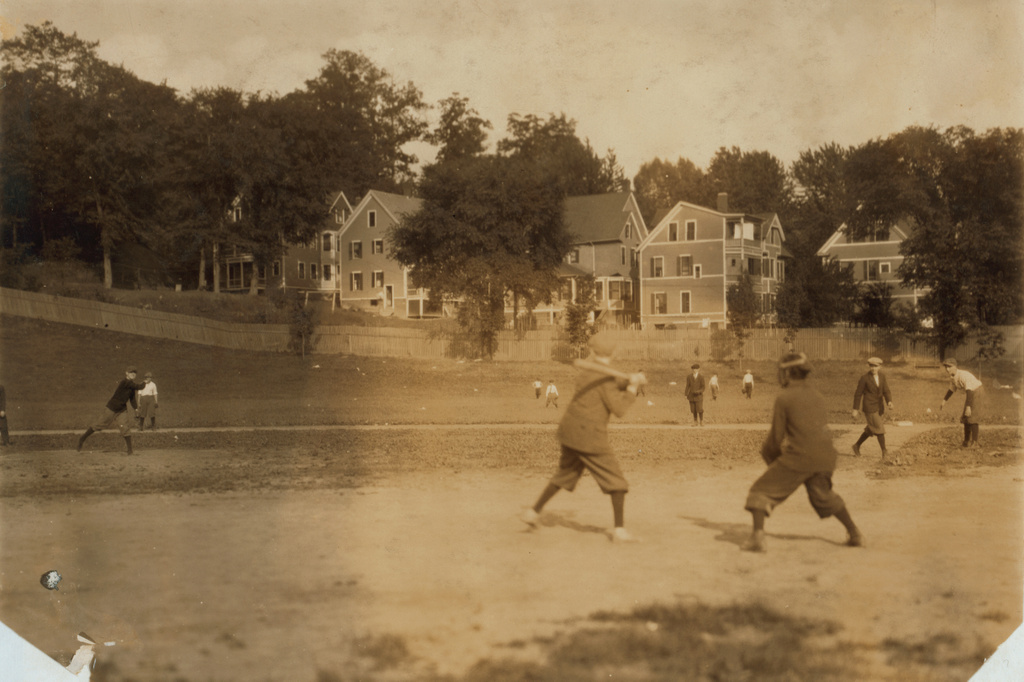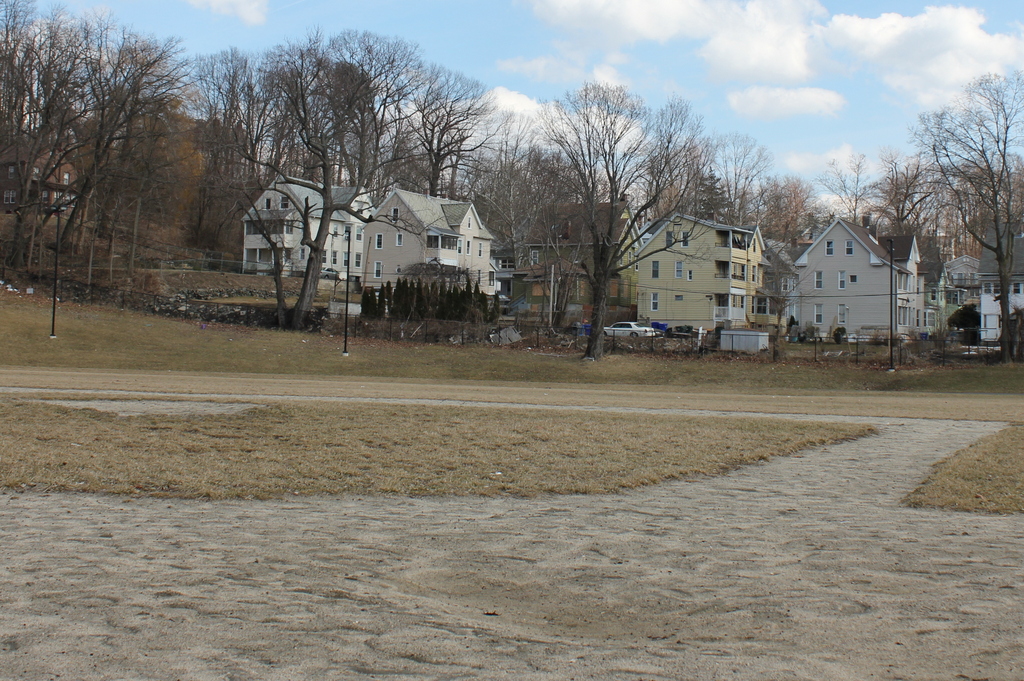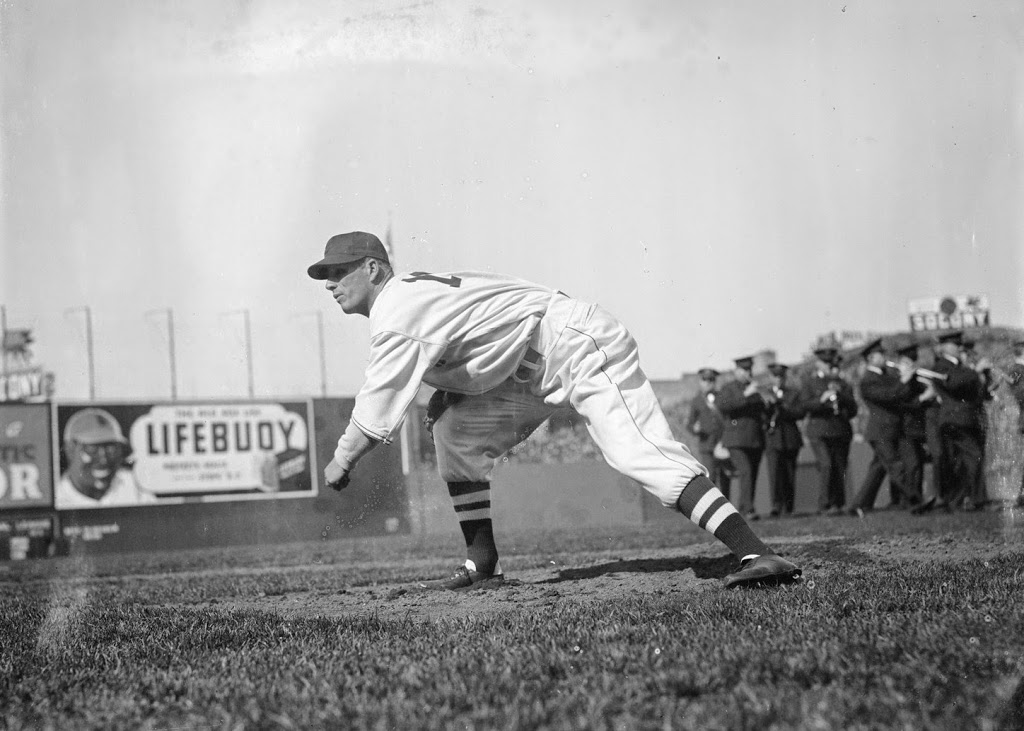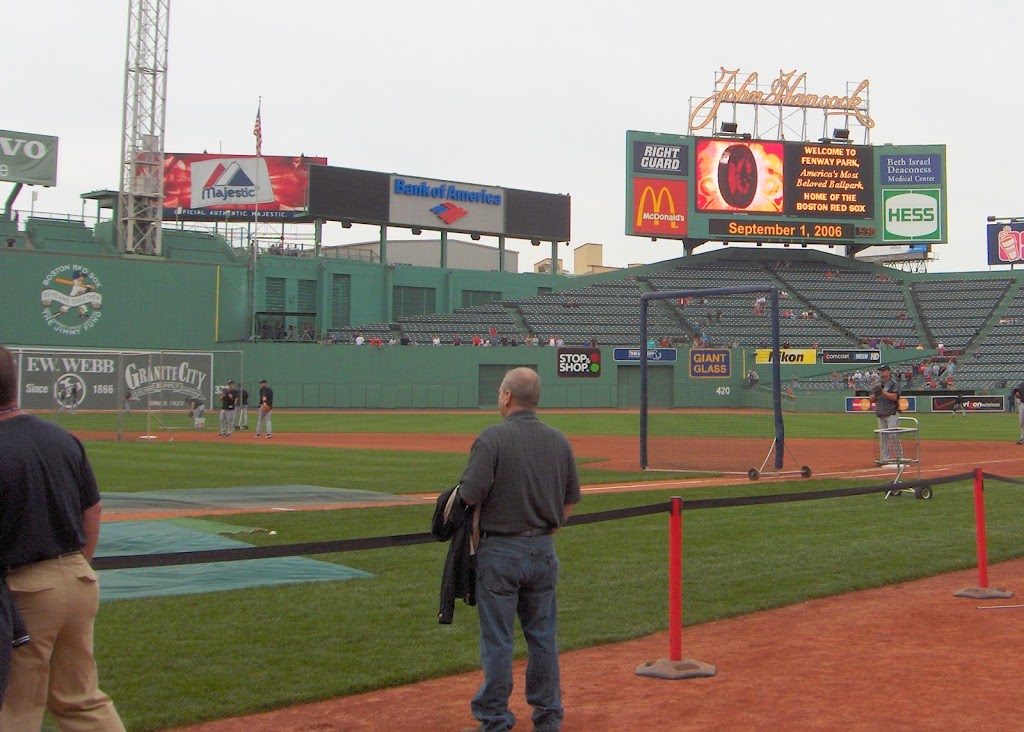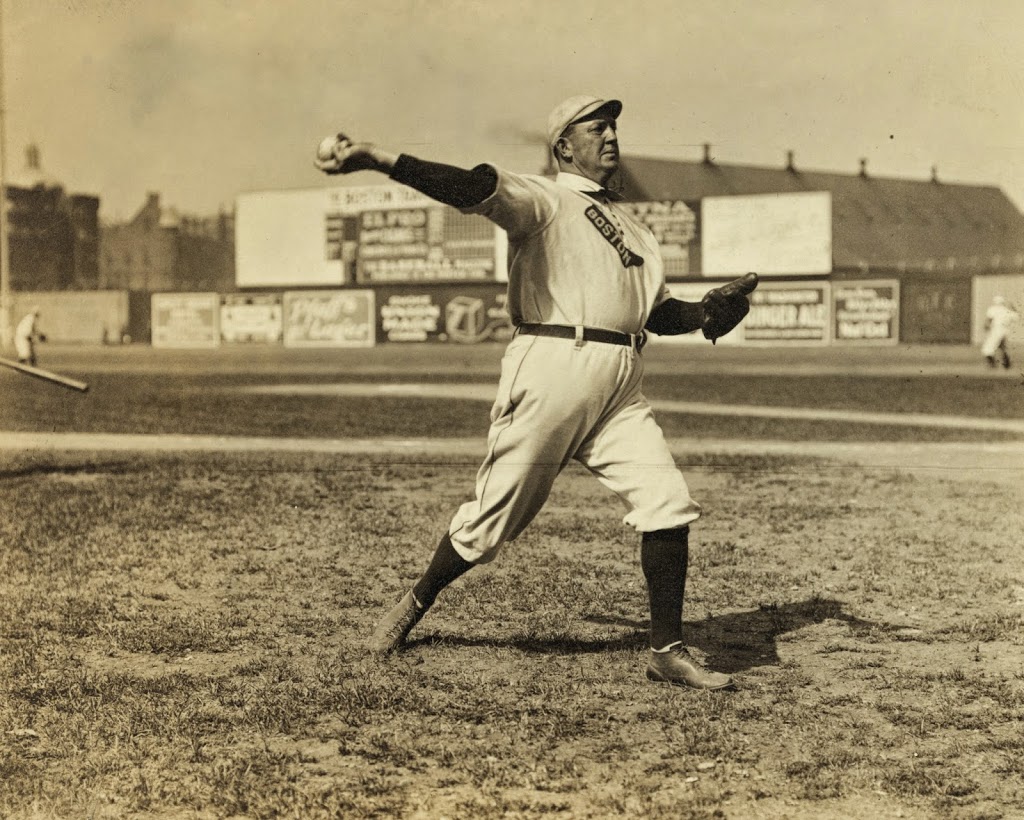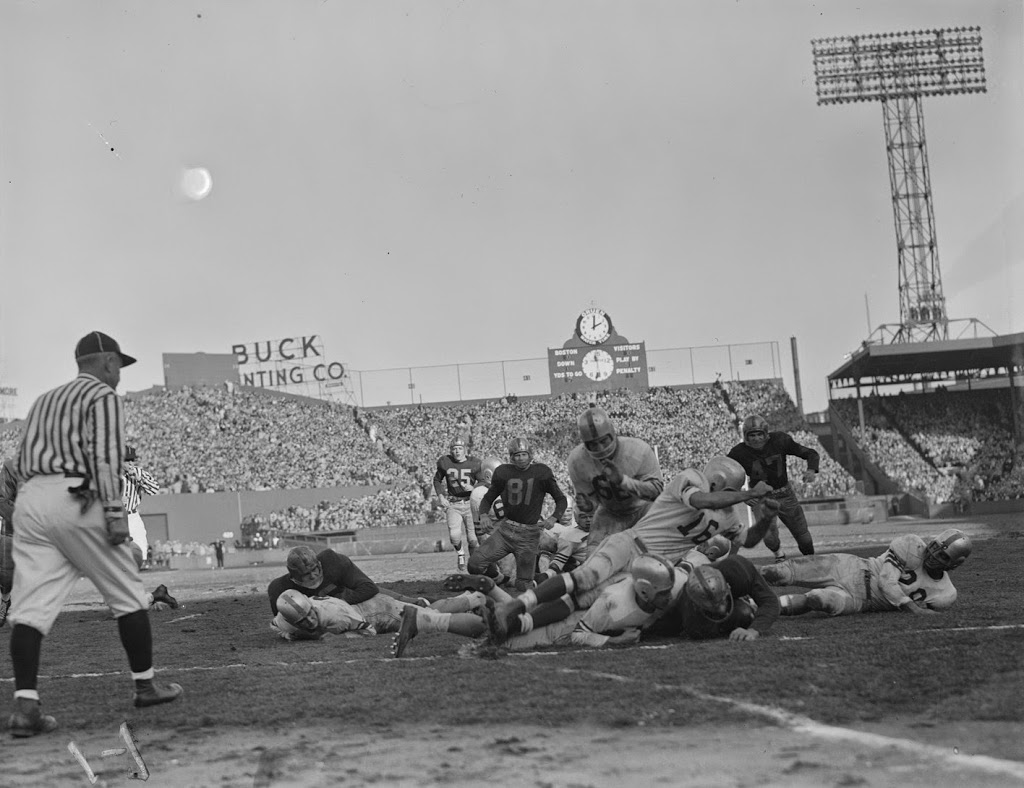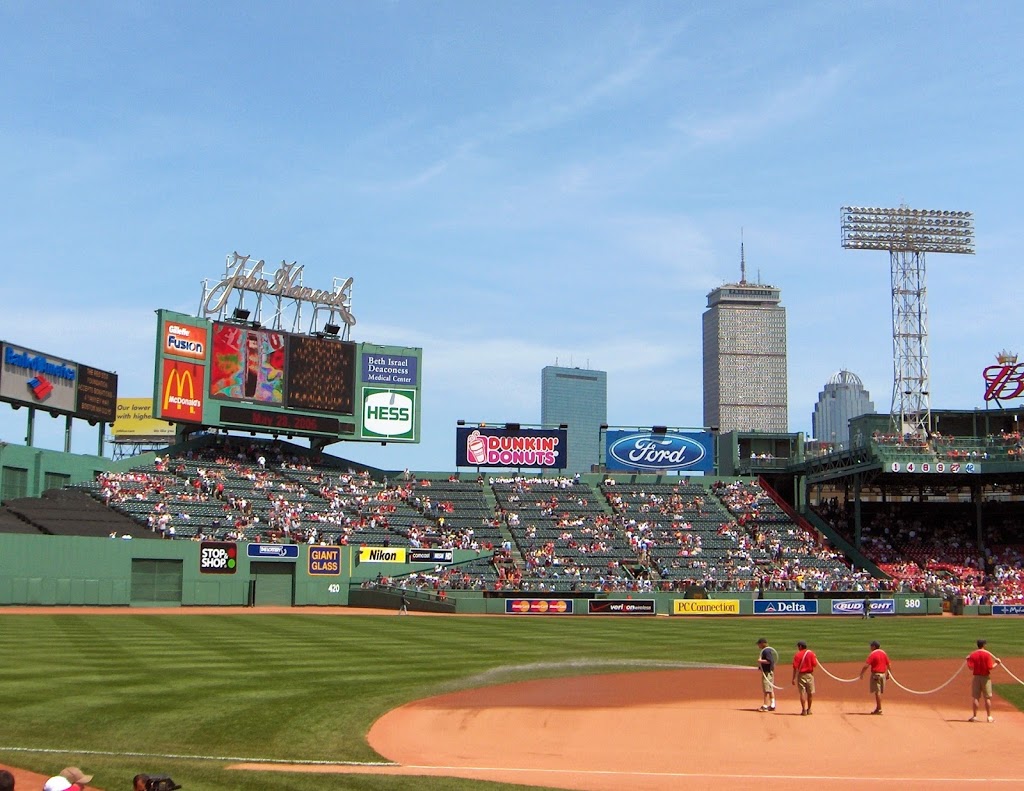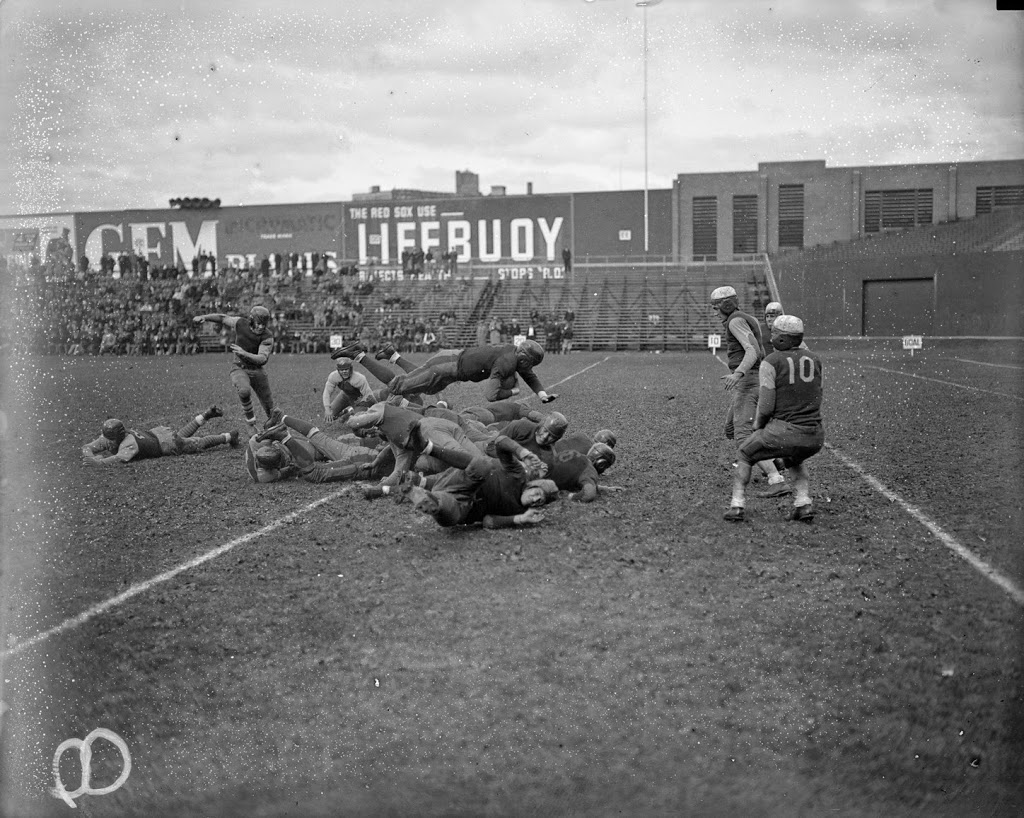Another view of boys playing baseball at Emerson Wight Playground in Springfield, Mass. Image courtesy of the Library of Congress, National Child Labor Committee Collection.
The park in 2014:
As was the previous photo, this was taken by Lewis W. Hine during his documentation of child labor conditions for the National Child Labor Relations Committee. Between the two scenes, 98 years apart, remarkably little has changed, down to the houses on Acushnet Avenue in the background, and it is possible that the two large trees near the center of the 2014 photo are also in the 1916 one – there are several saplings along the fence, two of which are in the exact same locations as the present-day trees.


